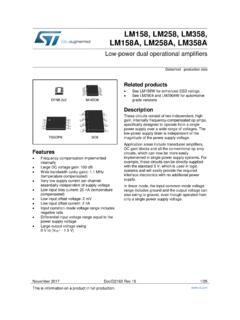Transcription of Evidence Based Guidelines for Exercise and Chronic Heart ...
1 1 Evidence Based Guidelines for Exercise and Chronic Heart Failure Julie Adsett BPhty (Hons) Heart Failure Service Royal Brisbane and Women s Hospital Robbie Mullins M Appl Sci (Clin Ex Sci) B Appl Sci HMS (Hons) School of Exercise and Nutrition Sciences Queensland University of Technology Funded by Pathways Home Project 2007/2008 Updated 2010 2 INTRODUCTION Chronic Heart failure (CHF) is characterized by an intolerance to Exercise , with this group of patients often experiencing early fatigue and shortness of breath.
2 Such symptoms impact upon one s ability to perform activities of daily living, thus significantly contributing to reduced participation and poor quality of life. In an attempt to both improve outcomes for this population and reduce the significant economic burden imposed upon the health care system, designated Heart failure services have recently been established throughout Queensland. Up until the late 1980s, Exercise was considered unsafe for the patient with CHF. It was unclear whether any benefit could be gained from rehabilitation, and concern also existed regarding patient safety, with the belief that additional myocardial stress would cause further harm.
3 Since this time, considerable research has been completed and the Evidence resoundingly suggests that Exercise for this patient group is not only safe but also provides substantial physiological and psychological benefits. As such, Exercise is now considered an integral component of the non pharmacological management of these patients. Whilst the potential benefits are clear, there are currently no Guidelines or resources available to Exercise specialists working in designated Heart failure services in Queensland.
4 This document provides a review of the current literature specific to various forms of Exercise available for patients with CHF. The information is relevant for centre Based rehabilitation programmes and also provides Guidelines for Exercise undertaken external to these environments. This information can be utilized by both those patients seeking additional opportunities to Exercise , as well as those unable to access the formal rehabilitation programmes. CONTENTS Page 1.
5 Aerobic Exercise and Chronic Heart Failure 4 Aerobic Metabolism 4 Effects on Autonomic Function and Endothelial Function 5 Effect on Pulmonary Function 6 Effect on Central Haemodynamics 7 Quality of Life and Symptoms 8 Safety.
6 Morbidity and Mortality Benefits 9 Training Principles 10 The Principle 10 Other Considerations 12 References 12 2.
7 Resistance Exercise and Chronic Heart Failure 18 Physiological Benefits of Resistance Training 18 Resistance Training versus Aerobic Training 19 Type of Exercise 19 Training Specifics 20 Clinical Implications 21 References 21 3.
8 Swimming and Chronic Heart Failure 24 Effects of Immersion 24 Haemodynamic Effects of Immersion in Patients with CHF 24 Implications for Practice 26 References 27 4. Tai Chi and Chronic Heart Failure 29 The Evidence 29 Balance and Falls 29 Cardiorespiratory Function 29 Strength and Flexibility 30 Psychosocial Benefits
9 30 References 31 Authors Contact Details and Acknowledgements 33 31. Aerobic Exercise and Chronic Heart Failure Of the many studies relating to aerobic training and CHF, it has often been noted that functional capacity improves significantly. In comparison, little or no improvement in cardiac performance takes place. As such, the majority of the physiological changes that occur post training are thought to be secondary to peripheral, rather than central adaptations.
10 The most commonly cited outcomes of aerobic training are listed below and will be discussed in more detail. Improved aerobic metabolism Improved autonomic regulation Improved peripheral perfusion Decreased local inflammation Improved ventilatory control Improved quality of life Decreased hospital readmissions and mortality Aerobic metabolism In keeping with the specificity of training principle, aerobic training has been shown to improve the physiological components of aerobic metabolism. In particular, studies have repeatedly demonstrated an improvement in VO2peak.











